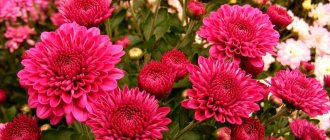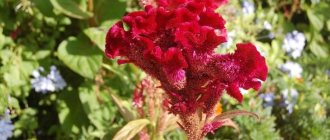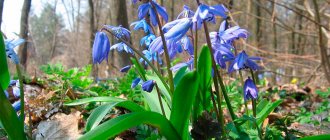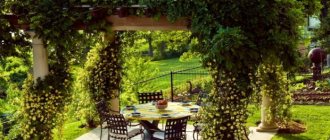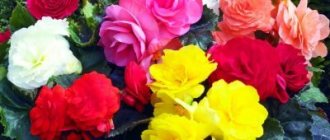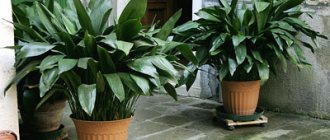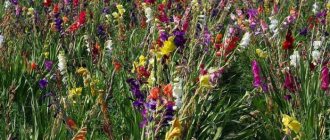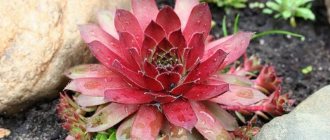Author: Elena N. https://floristics.info/ru/index.php?option=com_contact&view=contact&id=19 Category: Garden plants Published: February 08, 2019Last edits: January 13, 2021
- When to plant
- Growing conditions
- How and when to collect seeds
- Alpine Armeria (Armeria alpina)
Armeria is a flowering perennial with very beautiful inflorescences that form from May until the onset of frost. Armeria is decorated with ridges, it is planted as a border for flower beds and garden paths. Armeria looks good in the vicinity of low-growing and ground cover plants, for example, saxifrage or awl-shaped phlox.
Armeria is often used to make bouquets, including winter ones.
- What types and varieties of Armeria are most in demand in garden culture?
- What is the best way to sow armeria?
- How to care for a plant during the season?
- How to prepare armyia for wintering?
You will get answers to all these questions by reading our article.
Planting and caring for armeria
- Planting: sowing seeds in the ground - before winter or in early March; sowing seeds for seedlings - at the end of February or early March, planting seedlings in the ground - from the second half of May.
- Lighting: bright sunlight, for turfy armeria - partial shade or bright diffused light.
- Soil: moist and light, sandy loam, acidic.
- Watering: moderate, more frequent in dry seasons.
- Fertilizing: before flowering, complete mineral fertilizer.
- Reproduction: seeds, cuttings and dividing the bush.
- Pests: aphids.
- Diseases: spotting.
Read more about growing armeria below.
flowers (Latin: Armeria) form a genus of herbaceous flowering perennial plants of the Vinaceae family, numbering more than ninety species in nature. The name "Armeria" may come from the combination of two Celtic words: "ar", which means "near, nearby", and "mor" - "sea". The validity of this assumption is confirmed by one of the common types of Armeria, which prefers to grow in coastal dunes. But there is also an opinion that “armeria” comes from the word “armoires” - this is the name of the bearded carnation in Old French, with which some types of armeria are similar. Under natural conditions, the Armeria flower is found in Eastern Europe, the Mediterranean, Mongolia, America and Siberia.
- Primrose: growing in the garden, types and varieties
Protection from pests and diseases
Armeria is very rarely affected by diseases and insects. But if there is excess moisture, the root system may rot and spots may appear on the leaves. In such cases, the bush needs to be dug up, all damaged parts removed, and treated with a fungicide. Transplant the plant to a new location.
Of the pests, aphids pose a danger to armeria. It practically dries out the leaves, causing the plant to die. To avoid this, preventive treatment with insecticides (Kinmiks, Intavir) is carried out at the beginning of summer. If aphids do appear during the summer, the plants must be treated again.
Botanical description
The Armeria plant reaches a height of 15 to 60 cm. It has a short taproot, and numerous linear-lanceolate sessile entire leaves, collected in a basal rosette, form dense clumps - pillows. The stem is straight, smooth or pubescent. Small flowers of white, pink, purple and their shades are collected in capitate inflorescences. The fruit is single-seeded. Armeria flowering begins in May and ends at the end of summer.
The most popular species in culture is the seaside Armeria maritima. Growing seaside armeria is carried out in the same way as growing armeria of any other species, the only difference is that it is preferable for seaside armyia to grow near a reservoir.
How to prepare for winter
The flower tolerates winter well even with very low temperatures, but provided there is a sufficient amount of snow that covers the bushes and protects them from negative factors.
It is necessary to cover the plant during cold periods so that the branches do not freeze
Attention! The sod flower is the only representative of the plant that does not tolerate frost well. Before the onset of cold weather, the bushes must be covered with spruce branches or wrapped in non-woven fabric.
If there is not enough snow, the plants need to be covered with fallen leaves or spruce branches. You can use non-woven fabric or dry peat for covering. With the onset of the first warm spring days, the bush needs to be opened.
Growing Armeria from seeds
How to sow seeds
Seed propagation of Armeria is carried out both by seedlings and without seedlings. Armeria seeds are sown in open ground at the end of autumn (so that they undergo natural stratification over the winter) or in the spring, at the beginning of March. Armeria seeds are sown for seedlings in greenhouses at the end of February or beginning of March. In addition, Armeria reproduces well by self-sowing. Wherever you sow the Armeria seeds - directly into the ground or into a container for seedlings - plant them shallowly, sprinkling them with a half-centimeter layer of soil on top. The germination rate of Armeria seeds is high.
Seedling care
If you want to get healthy shoots, keep the Armeria seeds in the refrigerator for a week, and before sowing, soak them for 6-8 hours in warm water. Armeria seeds sown in boxes and lightly sprinkled with soil are kept in a warm, bright place. When the seedlings reach a height of several centimeters and they have a pair of true leaves, the seedlings dive into greenhouses and grow until they become stronger.
When to plant armeria for seedlings: optimal timing
It is important not only how you perform the procedure, but also when. Correctly chosen sowing dates play an important role in the success of growing good seedlings. Optimal timing for planting armeria seedlings: end of February, first half of March. That is, by this time the seeds should already be stratified.
In more southern regions you can sow earlier (the first half of February), but in colder regions (Moscow region, Siberia, the Urals) - later (the first half of March).
Planting armeria in open ground
When to plant
As soon as you are sure that the leaves of the Armeria in the greenhouse have become strong and strong, and the frosts have completely receded, you can start transplanting the seedlings into open ground. Determine the warmest and sunniest area for the armeria with light, slightly moist, acidic soil - sandy or rocky soils are most suitable. If the soil is limed, try to correct this before planting, as Armeria does not tolerate lime. To neutralize, add ammonium nitrate to the soil under digging or spill the area with a solution of acetic acid.
How to plant
Two weeks before planting, thoroughly loosen the soil on the site and apply organic fertilizers. If you decide to grow armeria as solo plants, they are planted in holes at a distance of 30-40 cm from each other and from other plants, placing the seedling in such a way that the rosette of leaves is not lowered into the ground and the root collar is shallow. The holes are filled with earth, the soil is compacted around the seedlings and the planting is watered.
- Echinacea: seed scarification
If you want Armeria to grow in a continuous carpet, then the seedlings need to be planted densely so that there is a distance of no more than 15-20 cm between the specimens, and not in holes, but in shallow trenches.
For the first three weeks, try to water the armeria often, but let the soil dry out between waterings. Armeria from seeds usually blooms the next year after planting. Armeria maritime is grown from seeds according to the same rules as any other species.
Reproduction
Armeria is a perennial. Having planted it once, you can admire the plant for more than one year. In addition to growing from seeds, cuttings and dividing the bush are also used.
Cuttings
The procedure can be carried out throughout the entire growing season. You need to take the root rosettes and sprinkle them with soil. If it's warm outside, they will quickly take root and settle down. If the weather is cool, then the cuttings can be covered with a glass jar, creating a greenhouse.
Dividing the bush
The procedure can be carried out when the armeria reaches 3 years of age. The bush is growing and requires rejuvenation. At the same time, it reproduces. At the beginning of spring or autumn, dig up the bush and divide it into equal parts. Remove damaged roots and stems. Pre-prepare the soil. Dig separate holes for each division. Bury them at a distance of 20-30 cm from each other.
As a rule, flowering with the vegetative method of propagation occurs in the second season. But if you plant a plant in the spring, then a small number of flowers may already appear closer to the autumn of the same year.
Armeria care
Growing conditions
Caring for an army is not difficult. Before it blooms, add complete mineral fertilizer to the soil as a top dressing, and then repeat the top dressing once or twice. Remove faded flowers in a timely manner and cut off flower stalks that no longer bear flowers, so that the plant directs all its energy to the formation of new buds. If the summer turns out to be dry, water the armeria, but try not to overdo it with moisture.
When the plant reaches five years of age, it must be dug up, divided into parts and planted, and then do this every 2-3 years, otherwise the armeria will grow. This is how armeria is planted and cared for. It's simple.
Pests and diseases
Armeria is not afraid of diseases or pests, but if it grows in insufficiently acidic soil, problems with aphids or spotting may arise, which are best dealt with by radical pruning of the shoots.
Garden care
If the planting site for the armeria was chosen correctly and all the nuances of planting were followed, there will be no difficulties in caring for it.
How to care during growth and flowering
Caring for armeria after planting consists of observing watering conditions, regular fertilization, timely pruning and rejuvenation of bushes.
Watering
The plant needs moderate watering. During the rainy season, natural moisture is enough for him. And on hot summer days, it is recommended to irrigate the bushes using the sprinkling method.
It is important that the soil dries out between waterings.
Fertilizer and feeding
Armeria does not require mandatory regular fertilizers. But the plant will bloom much brighter, more abundantly and longer if once a month or a month and a half (immediately before flowering) the soil is enriched with mineral fertilizers intended for flowering plants. In this case, the solution must be used instead of the next watering.
Trimming
An important stage of care is pruning immediately after flowering. This technique allows you to achieve the likelihood of repeated flowering in the autumn.
Rejuvenation
The main feature of care is the need for regular rejuvenation of bushes.
It is carried out every 5–6 years (necessarily in the warm season after the plant has flowered) by digging up a bush and then dividing it into parts (divisions) ready for planting in the ground.
Care after flowering
After the active flowering phase has ended, the inflorescences that are beginning to fade must be removed as soon as possible.
This is done using pruning shears by trimming long flower stalks. These manipulations allow you to ennoble a fading plant, freeing up its lush greenery, and also stimulate re-blooming in the autumn.
Armeria is quite resistant to frost and successfully preserves most of its foliage under the snow, without needing any shelter.
The only exception is turf, which must be wrapped in dry peat and covered with spruce branches or non-woven material. If the winter is expected to have little snow with frequent periods of warming, the same should be done with all other species to protect them from frost.
Different varieties of Armeria are used to decorate borders
Possible problems when growing at home
Armeria is a plant that is quite resistant to various diseases and pests. And yet, there are two main problems that gardeners face from time to time:
- The appearance of spots on the leaves, accompanied by a slowdown in plant growth and cessation of flowering. If the disease is detected at an early stage, careful treatment of the plant with a fungicide is necessary. If the spotting has spread greatly, it is recommended to cut off all affected elements at the root.
- Attack of aphids, due to which the leaves become very dry. To avoid this, you can treat plants with special preparations (Intavir, Kinmiks) in early spring for preventive purposes, repeating the procedure if necessary.
Armeria after flowering
How and when to collect seeds
There is no point in collecting seeds if armeria is already growing on your site - it reproduces well by self-sowing. In addition, an obligatory element of plant care is dividing the rhizomes and planting cuttings, so that you will always have plenty of planting material, and the sowing material sows itself.
If you want to share your armeria with someone, you can give away part of the cuttings when transplanting or cut cuttings. But if you absolutely need to have seeds, tie the fading inflorescence with gauze so that the ripened seeds do not fall to the ground, and when the inflorescence is dry, cut it off, shake the seeds onto a newspaper, clean them from the remains of the flowers and, after drying, pour them into a paper bag.
- Azalea at home: planting and care
Perennial armeria in winter
Armeria is a frost-resistant plant and can easily survive the winter without shelter, especially if there is a lot of snow in winter. The only exception is the soddy armeria, which must be covered. Dry peat, spruce branches and non-woven materials are used for covering. If, according to forecasts, the winter is expected to be snowless, it is better to cover other types of armeria with spruce branches: they will be warm and you will be at peace.
Watering and loosening the soil
Despite the fact that planting and caring for armeria in the open ground will not cause difficulties, the minimum recommendations should be followed. The flower can survive periods of drought, but it is still recommended to water it from time to time.
Saxifraga flower - planting and care at home
During a particularly dry season, it will be useful to spray the leaves and flowers with a spray bottle or a special garden sprayer. The bush will grow and develop if you occasionally loosen the soil around it.
Important! Flowers should not be over-watered as they do not tolerate stagnant water.
Types and varieties
About ten types of Armeria have become widespread in culture. They are used in group plantings, ridges, rock gardens, rock gardens, and also as colored borders.
Alpine Armeria (Armeria alpina)
A perennial plant that forms dense cushions up to 30 cm in diameter and about 15 cm in height. Many of the linear-lanceolate leaves survive winter. The flowers are light pink, collected in axillary capitate inflorescences up to three centimeters in diameter. Peduncles up to 30 cm tall. It blooms for three to four weeks from June. Varieties:
- Alba - white armeria;
- Laucheana – armeria with carmine-red flowers;
- Rosea is a variety with bright pink flowers.
Pseudoarmeria, or beautiful armeria (Armeria pseudarmeria)
A plant reaching a height of 40 cm with rosettes of evergreen leaves and inflorescences of white or pink flowers. Blooms from early to late summer. Varieties:
- Joystick White - a variety with white spherical inflorescences, can be grown as an annual;
- Thrift is a low-growing variety with a height of only 20 cm;
- Red Planet is a perennial with red balls of inflorescences on peduncles up to 35 cm tall;
- Bees Ruby is a bright pink armeria up to 60 cm tall.
Armeria maritima
Grows naturally on sea coasts. Its height is no more than 20 cm, the diameter of the rosette is the same. The leaves are narrow, linear, flat, blue-green in color. Flowers in capitate inflorescences are pink-purple, covered with filmy bracts. It blooms in May and fades in about seventy days. Sometimes it blooms again in the fall. Varieties:
- Armeria louisiana is a variety of Armeria maritime with pink flowers;
- Dusseldorf Stolz - variety with dark red flowers;
- Vindictive – red armeria;
- Bloodstone - Armeria dark red.
Soddy Armeria, or juniper-leaved Armeria (Armeria juniperifolia = Armeria cespitosa)
Originating from the highlands of Spain and Portugal, it is a perennial up to 15 cm high with narrow linear leaves collected in a rosette up to 20 cm in diameter. Red or pink flowers in capitate inflorescences are framed by membranous bracts, peduncles up to 6 cm tall. The flowering is so abundant that sometimes the leaves of the Armeria are not visible because of the flowers with bracts. It blooms for forty to fifty days from July. Does not tolerate stagnation of moisture in the roots. A popular hybrid is Armeria turf and Armeria seaside called Armeria Zundermann. Varieties of Armeria turf:
- Brno - a low-growing variety with purple double flowers;
- Bevan's Variety - double flowers, pale pink.
Armeria welwitschii (Armeria welwitschii)
One of the tallest types of Armeria - up to 35 cm in height. The leaves are large, reaching a length of 10 and a width of 5 cm. Pink flowers up to 2 cm in diameter form a capitate inflorescence. Flowering is abundant and long from June until the beginning of winter. This species requires calcium-enriched soil.
Common Armeria, garden (Armeria vulgaris)
Grows in height up to 60 cm, linear, entire leaves reach 12.5 cm in length and 1 cm in width. The bare peduncles are crowned with capitate inflorescences of carmine-pink fragrant flowers, of which there can be up to 40 on one plant.
Beautiful Armeria (Armeria formosa)
Forms compact rosettes of narrow-linear evergreen leaves. Stems are rigid, rounded, erect. Inflorescences up to 5 cm in diameter, white, red or pink, bloom profusely until October.
In addition to the listed types of Armeria, Japanese, Siberian, spiny, bulbous, Arctic and others are also known.
Using flowers in landscape design
Thanks to its dense and bright vegetation, Armeria is widely used to decorate garden plots. It is used to create ridges, rocky compositions, mix-borders, and rock gardens.
The elongated leaves of the crop retain their beauty all year round, thereby forming a continuous green carpet.
In flower beds they are planted next to low-growing representatives of the flora (thyme, bells, phlox). In addition, they create original bouquets from different varieties of armeria.
The inflorescences retain their beautiful appearance even after drying, so they are used to form dry compositions. For these purposes, they are cut off during flowering and hung in the sun with their heads down.
Armeria is undemanding to care, so gardeners, with a minimum amount of effort, can enjoy the healthy appearance of the plant for a long time.
9.Note, interesting facts
In people prone to allergic reactions, Armeria pollen can cause an attack.
Early and abundant flowering will attract bees and other beneficial insects to the site - in this case, the bushes will become excellent honey plants.
Peduncles with attractive buds can be cut as soon as the flowers begin to bloom and placed in a vase with water - when cut, they will not lose their attractiveness for 7 - 10 days. Also, dried flowers obtained from this plant will decorate the interior for 1 - 2 years.
↑ Up,
In order to obtain dry inflorescences, the flower stalks are cut when approximately half of the buds are open, then collected into small bunches and tied with twine. The bunches are hung under a canopy or placed in a warm, well-ventilated place. It is worth making sure that such bunches are not exposed to direct rays of the sun - in this case, the buds may lose color and burn out.
The compact size of the flower allows it to be grown not only in the garden and country house, but also at home - in ordinary flower pots.
↑ Up,
Interestingly, the very name of the flower is associated with its place of growth in nature - it comes from the Celtic phrase “ar” and “mor” - near the sea. Some botanists believe that the generic name comes from the French language, where the word “armoires” meant bearded carnation, similar in appearance to our flower.
Sometimes, over time, a species of Armeria begins to behave like a weed—they begin to self-sow abundantly and divide. To grow such species, it is worth choosing a site where it will not interfere with other plants or limit planting using a special garden border or buried slate, and cut off the inflorescences immediately when they wilt.
↑ Up,


